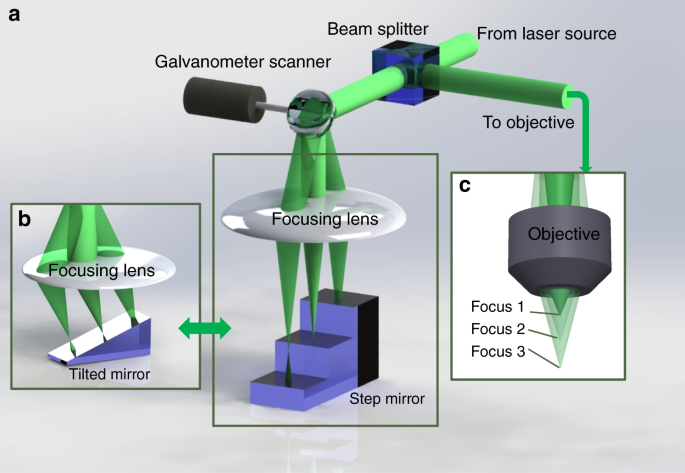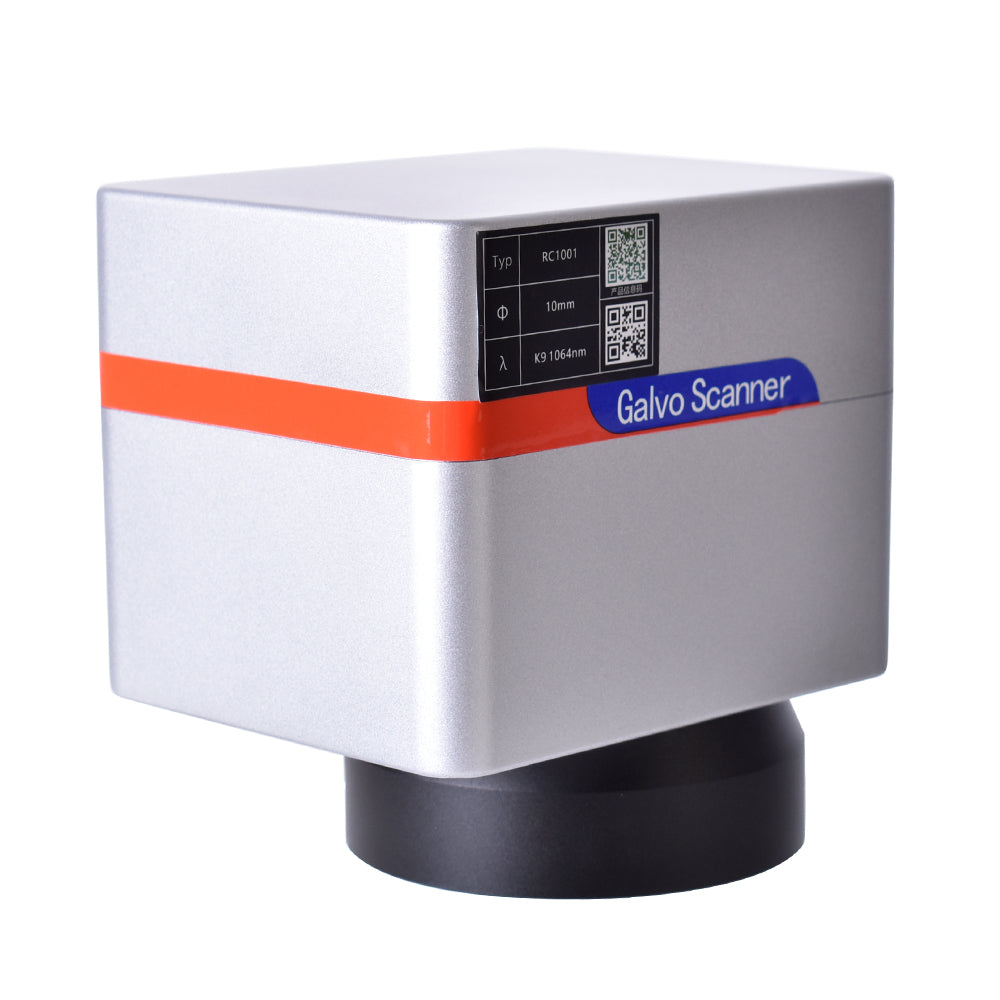Understanding the Technology Behind the Galvanometer Scanner for Accurate Readings
Understanding the Technology Behind the Galvanometer Scanner for Accurate Readings
Blog Article
Just How a Galvanometer Scanner Boosts Performance in Laser Scanning Technologies
The integration of galvanometer scanners in laser scanning modern technologies represents a pivotal advancement in accuracy design. By helping with rapid and accurate modifications of laser beam instructions, these devices significantly boost operational effectiveness across various applications, from clinical imaging to industrial inscription. The underlying electro-magnetic devices, coupled with sophisticated responses systems, guarantee real-time control and boosted precision. Nevertheless, as markets significantly require greater performance criteria, the concern develops: what future innovations might better raise the capabilities of galvanometer scanners in this advancing landscape?
Comprehending Galvanometer Scanners
A galvanometer scanner is an innovative device that leverages electro-magnetic concepts to achieve exact angular motion of mirrors or other reflective surface areas. These scanners run through the communication of an electric present and a magnetic area, allowing accurate and rapid positioning. This innovation is essential in applications requiring high-speed scanning, such as laser inscription, optical interaction, and medical imaging.

Galvanometer scanners are typically characterized by their fast action times and high angular resolution, making them excellent for applications that demand quick movements and precise positioning. Their integrity and performance make them an essential element in modern laser scanning modern technologies, contributing considerably to innovations in numerous areas, including production, health care, and telecoms.
System of Laser Beam Of Light Control

The control mechanism relies upon closed-loop feedback systems that continuously keep an eye on the light beam's setting. The signals from optical sensing units give real-time information to the control system, enabling rapid adjustments to preserve accuracy. This is critical in applications where even minor variances can compromise the top quality of the check or inscribing.
Additionally, the galvanometer's action time is paramount; high-speed motors enable swift movements, making certain that the laser light beam can swiftly map complex patterns or do complex operations. The combination of electronic signal processing further boosts the responsiveness and accuracy of the galvanometer scanner. In general, the device of laser beam of light control with galvanometer scanners exemplifies the blend of advanced engineering and innovation, generating high-performance results in laser scanning applications.
Benefits of Enhanced Accuracy
Boosted precision in laser scanning technologies uses substantial advantages throughout different applications, from industrial manufacturing to clinical procedures. The integration of galvanometer scanners allows for highly exact beam positioning, which is crucial for jobs needing meticulous information. This enhanced precision view makes certain that the laser can target particular locations with very little inconsistency, causing remarkable top quality results.
In commercial contexts, exact laser scanning results in boosted product consistency and minimized product waste. Parts made with high precision see this here are less most likely to call for rework, thus improving efficiency and lowering operational expenses. In clinical applications, the accuracy of laser treatments can dramatically impact individual results. For example, in laser surgical treatment, accurate targeting lessens damages to bordering tissues, bring about quicker recovery times and fewer issues.
In addition, improved accuracy facilitates sophisticated applications such as 3D imaging and microfabrication, where even minute mistakes can result in substantial errors. By giving repeatable and reputable laser positioning, galvanometer scanners contribute to the overall efficiency and efficiency of laser systems. In recap, the advantages of improved precision not only enhance operational performance but additionally raise the standards of quality and safety in different fields.
Applications in Different Industries
The adaptability of galvanometer scanners in laser scanning innovations expands across numerous markets, each taking advantage of the accuracy they give. In the clinical field, these scanners are pivotal in applications such as laser surgery and imaging, permitting highly accurate targeting of cells while reducing damages to surrounding locations - galvanometer scanner. Their quick reaction and great resolution are vital in creating top notch outcomes
In the manufacturing sector, galvanometer scanners enhance procedures like laser inscription and cutting. Their capability to swiftly guide laser light beams onto surfaces makes it possible for reliable production lines, boosting speed and precision in producing complex designs or elements.
The automotive market likewise takes advantage of galvanometer technology for quality assurance and assessments (galvanometer scanner). By utilizing high-speed scanning, producers can spot defects in materials or settings up, guaranteeing that products fulfill stringent requirements
Moreover, in the entertainment market, galvanometer scanners are used in laser light shows and display screens, providing dynamic aesthetic experiences with precise control over laser movements.
Future Trends in Laser Scanning
Arising technologies are poised to transform the landscape of laser scanning, with galvanometer scanners at the center of this improvement. As markets significantly demand precision and efficiency, the advancement of galvanometer technology will drive substantial improvements in laser scanning applications.
Future fads indicate a growing integration of synthetic intelligence and artificial intelligence algorithms, which will certainly boost information refining abilities and automate decision-making in real-time. This harmony will certainly permit more sophisticated analysis of checked information, bring about boosted precision in applications such as 3D modeling and autonomous navigation.
Furthermore, the miniaturization of components and the advancement of advanced materials will certainly add to lighter, a lot more portable laser scanning systems. This portability will increase the reach of laser scanning modern technologies right into previously unattainable environments, such as remote terrain and detailed architectural spaces.
The surge of augmented reality (AR) and digital truth (VR) applications will certainly likewise form the future of laser scanning. By incorporating wikipedia reference galvanometer scanners with AR and virtual reality, individuals will benefit from immersive experiences that improve visualization and project planning.
Conclusion
To conclude, galvanometer scanners play an essential duty in maximizing laser scanning innovations through their precise control of light beam direction and quick angular modifications. The integration of innovative responses systems and optical sensors significantly boosts operational rate and accuracy, causing enhanced end results in applications such as laser engraving and clinical imaging. As sectors progressively adopt these modern technologies, the recurring improvements in galvanometer scanner styles are anticipated to additional elevate performance requirements and broaden application opportunities.
The combination of galvanometer scanners in laser scanning innovations represents an essential development in precision engineering. On the whole, the device of laser beam control via galvanometer scanners exemplifies the combination of advanced engineering and innovation, yielding high-performance outcomes in laser scanning applications.
By giving repeatable and reliable laser positioning, galvanometer scanners add to the general efficiency and performance of laser systems.The flexibility of galvanometer scanners in laser scanning innovations extends throughout several markets, each profiting from the precision they offer.In final thought, galvanometer scanners play a critical duty in maximizing laser scanning innovations via their precise control of beam direction and fast angular changes.
Report this page